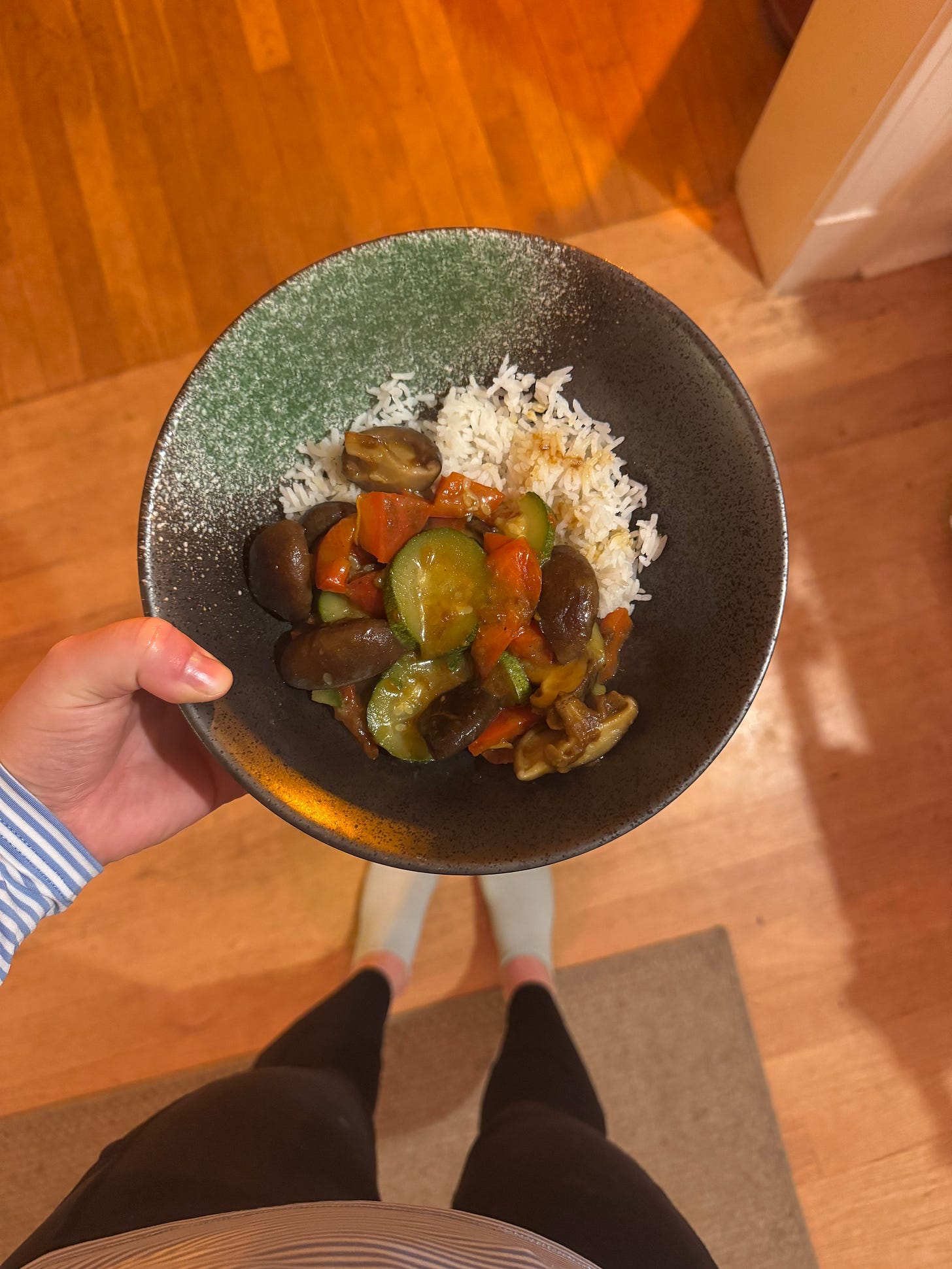From the Milk Man to the Milk Aisle
Including my dad's anecdotes of grocery shopping in the 60's
During a meandering dinner conversation over the holidays, I asked my father about his experience accompanying his mother to the grocery store in 1960’s Minnesota (a topic that was preferable to politics). As it turns out, grocery shopping was just one facet of a broader system that kept their stomachs full.
His family had a milk man who delivered fresh milk, a local butcher who would supply several month’s worth of freezer-bound meat and their eggs came from a nearby farm. My grandmother, a homemaker, would make bread weekly. She was also an avid gardener who took great care to preserve fruits and vegetables for when fresh produce wasn’t readily available.
With the basics covered, grocery shopping in the sense of loading into the station wagon for a trip to the Piggly Wiggly was far less integral than it is today. They might have stocked up on butter, flour, sugar, salt — but nothing like how a modern shopping cart looks.
As I write this, it’s funny to me how nostalgic I am for a time period I never experienced. Farm fresh eggs? Local meat? Living off the land? Sounds fantastic.
Eating the way my father’s family ate in the 1960s today is a surefire sign of monetary and time privilege.
Simultaneously, it dovetails with the “tradwife” media blitz that glorifies this type of back to the basics living that’s neither realistic nor desirable for many Americans.
A large driver in the changes behind how we get our food was the transition of women from working inside to outside of the home. The subsequent reign of the convenience economy was an answer to the question, how can I work a 9-5 and get dinner on the table at 6? The growing popularity of microwave dinners, cereal, and the snack aisle more generally accompanied this shift. Yes, this includes the rise of ultra processed foods.
Today, my grocery shopping is conducted almost entirely at a conventional retail store (Trader Joe’s and Grocery Outlet most often) with occasional specialty store and farmer’s market supplementation. I spend around $350 a month on groceries, buying what I need and some of what I want. Funnily enough, $350 is the average monthly cost of groceries for one person in the US. My splurges, like quality cheese and organic meat, feel worth it.
I, like many people my age, don’t have time to garden, make bread and visit the local farm every week, so I’m grateful there’s an alternative. However, I do think looking to the past illuminates what we’ve lost in the process. We’ve lost our connection to local agriculture and replaced an ingredients focused diet (heavy on meat, produce, eggs etc.) with highly processed alternatives,
Is it worth it? I don’t think so, and yet, I’m still puzzling through how we can harness the best of historic food systems while still balancing time and price restrictions currently acting upon consumers.
Cooking affordable meals that are decidedly not ultra processed is doable and I want to show you how, dammit! Each newsletter, I’ll share one recipe to get your creative cooking juices ~flowing~.
My friend Lilla shared a brilliant meal hack for a fridge clean out that heavily features vegetables. This came together in about 25 minutes, exactly the time it took for my rice to cook.
Quick N Dirty Curry
Ingredients:
Whatever vegetables you have! I used mushrooms, onions, red pepper and a zucchini
Olive oil
Rice
Japanese Curry Cube (look for one with simple ingredients)
Directions: Place your rice and water in a rice cooker and set to cook. Chop up the vegetables your intend to use into bite sized pieces. Sauté the vegetables in olive oil until they begin to get tender, about 10 minutes. Follow the package directions, add the cube to the pan and pour in water. Simmer for 15 minutes, remove from heat and pour over cooked rice.
I encourage you to flip around the label on your favorite packaged foods. Doing this is one step towards in decreasing the amount of ultra processed foods you’re regularly consuming. Here’s one switch I’m making:
I humbly implore you to check how much added sugar is in your granola! The option on the left has 13 g versus 6 g on the right (if you find an option with less sugar, I’m all ears). Notice also the oil that’s used. Canola oil is an ultra processed ingredient, whereas raw virgin coconut oil is not. If price is of concern, make your own. You can sub coconut flakes, peanuts, sunflower seeds and/or dried cranberries if other nuts are too expensive!
Learn more about the author here. Thanks for letting me riff about the food topics that keep me up at night!







